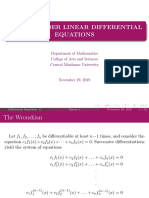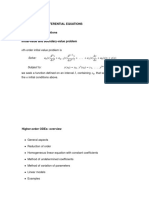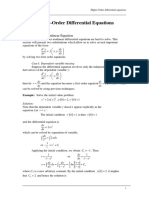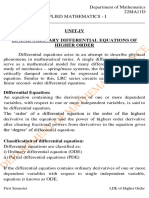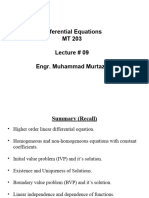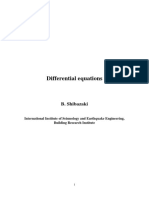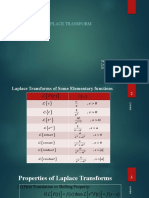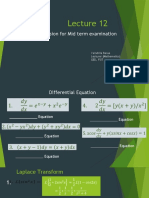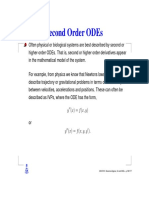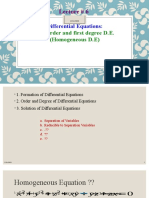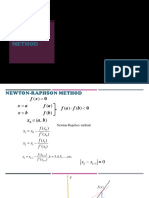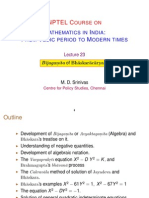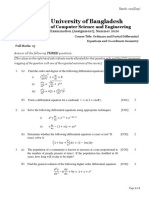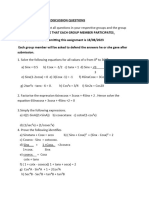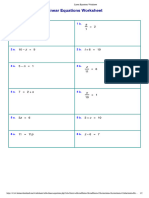0% found this document useful (0 votes)
111 views25 pagesHigher Order Linear Differential Equations: Math 240 - Calculus III
This document is about higher order linear differential equations. It covers linear differential operators, homogeneous and nonhomogeneous equations, and using the Wronskian to check for linear independence of solutions. The general solution to a linear differential equation is the sum of the general solution to the homogeneous equation plus a particular solution to the nonhomogeneous equation.
Uploaded by
Sadek AhmedCopyright
© © All Rights Reserved
We take content rights seriously. If you suspect this is your content, claim it here.
Available Formats
Download as PDF, TXT or read online on Scribd
0% found this document useful (0 votes)
111 views25 pagesHigher Order Linear Differential Equations: Math 240 - Calculus III
This document is about higher order linear differential equations. It covers linear differential operators, homogeneous and nonhomogeneous equations, and using the Wronskian to check for linear independence of solutions. The general solution to a linear differential equation is the sum of the general solution to the homogeneous equation plus a particular solution to the nonhomogeneous equation.
Uploaded by
Sadek AhmedCopyright
© © All Rights Reserved
We take content rights seriously. If you suspect this is your content, claim it here.
Available Formats
Download as PDF, TXT or read online on Scribd
/ 25



